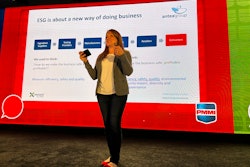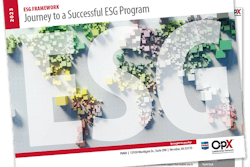
Great news: today’s labor market is robust and resilient, despite the naysayers and recession predictors. However, attracting and keeping workers in our plants requires moving away from business-as-usual approaches and adopting new strategies. That was the main message of Alex Chausovsky, Director of Analytics and Consulting at Bundy Group, during the 2023 PMMI Annual Meeting in Stone Mountain, Ga., on October 17. Breaking down the complexities of today’s workforce challenges, Chausovsky offered a clear roadmap for success to members in attendance.
A resilient labor market
Chausovsky first showcased the unexpected strength of the labor market in the face of economic uncertainties. Despite concerns about a recession, the United States added a remarkable 336,000 new jobs in September 2023, nearly doubling the expected figure of 180,000, according to data he showed from the Bureau of Labor Statistics. Additionally, the workforce participation rate for prime-age workers hit a record high, challenging prevailing negative narratives about the labor market.
However, rising labor costs are a reality and a significant challenge. Hourly earnings in the U.S. have surged by 4.2% in the last year, rendering the conventional 2% cost of living adjustment (COLA) obsolete. To retain and attract talent, organizations must now consider raises in the 3.5% to 5% range, solely for cost of living adjustments, Chausovsky said. In a climate of heightened inflation, customers may resist price increases, demanding that companies offer exceptional value to justify such adjustments.
There has also been some diversity in job growth, with multiple sectors contributing to positive employment numbers, including manufacturing, even though growth may seem slower compared to the post-pandemic highs of 2021 and 2022.
Attracting the talent
In such a labor market, there is a fierce competition for talent, especially in specialized roles like field service technicians – highly sought after by not just packaging machinery OEMs but across manufacturing. Differentiating your organization has become crucial to winning the talent race, Chausovsky said.
“You have to be better, you have to rise head-and-shoulders above, not only your peers, but everybody else looking for the same talent as well,” he said.
Then Chausovsky turned to the ongoing debate surrounding hybrid and remote work arrangements, emphasizing that there is no one-size-fits-all solution. Companies need to evaluate their specific needs, capacity, and financial resources when deciding on the right work arrangement for their employees.
Although the threat of COVID has diminished in terms of life risk, it still affects the workforce. Companies need to consider the potential impact of employees falling ill or needing to care for sick family members. This necessitates flexibility in workforce planning and continuous adaptation.
Not just HR anymore
Just as OEMs are strategic about the machines they make, so must they be about acquiring and keeping talent. Yet data from a survey Chausovsky conducted with over 20,000 companies reveals that a substantial 73% of organizations said they lack a dedicated talent strategy.
Acquiring talent is not the sole job of the HR department anymore, Chausovsky said.
“It should involve all senior members of the organization, not just the HR department, but all the way through the C-suite,” Chausovsky said.
Chausovsky advocated that companies set up their talent strategy using four key pillars: market, product, team, and mission. First, talent attraction should be akin to a sales and marketing function in the company.
Selling packaging as a career
“You have to sell the idea of packaging as an industry in which someone wants to build their career,” he said. “Packaging is not just the making of machinery, but it’s an evolutionary type of technology that constantly moves at the speed of light with the newest applications, coding, AI capabilities, and all of the hot buzzwords that are being thrown around today.”
Similarly, OEMs will be well positioned if they highlight what sets their company apart from competitors in terms of product differentiation and market strategy. When applicants understand what stands out about your brand, they will invest in it. It is also critical to promote the successes and accomplishments of your team, demonstrating that your organization is a winning one.
Mission is particularly key with the younger generations of workers, Chausovsky said. “They want to know what philanthropic activities you are taking part in and how you’re engaging in your local communities as an organization,” he said. “What is it that you do beyond making money that helps to make the world a better place?”

“Every candidate that comes in to interview for your organization should be asked which of these six things do you prioritize the most,” said Chausovsky. “Rank them in order of one to six, and then that information should be shared with the people conducting the interview.”
The presentation concluded with the idea of collaboration between employers and employees to achieve mutual success. It's not about reacting when employees decide to leave; it's about proactive engagement to understand their goals, identify shared objectives, and work together to meet them.
While the packaging and processing machinery manufacturing industry faces labor market complexities and increasing costs, OEMs can thrive in this environment. By lining up and implementing talent strategies, prioritizing data-driven decision-making when it comes to workforce, and tailoring their messaging to attract talent, OEMs can build a future where both businesses and their employees prosper.





















